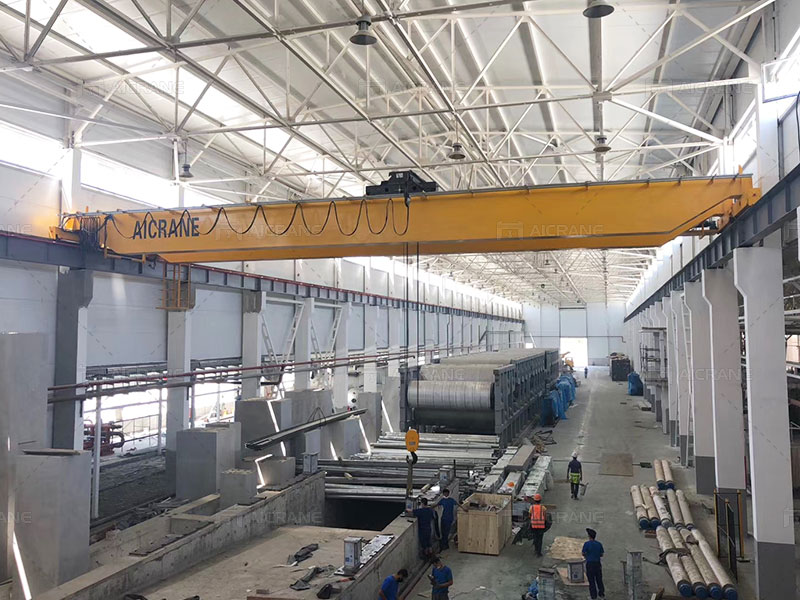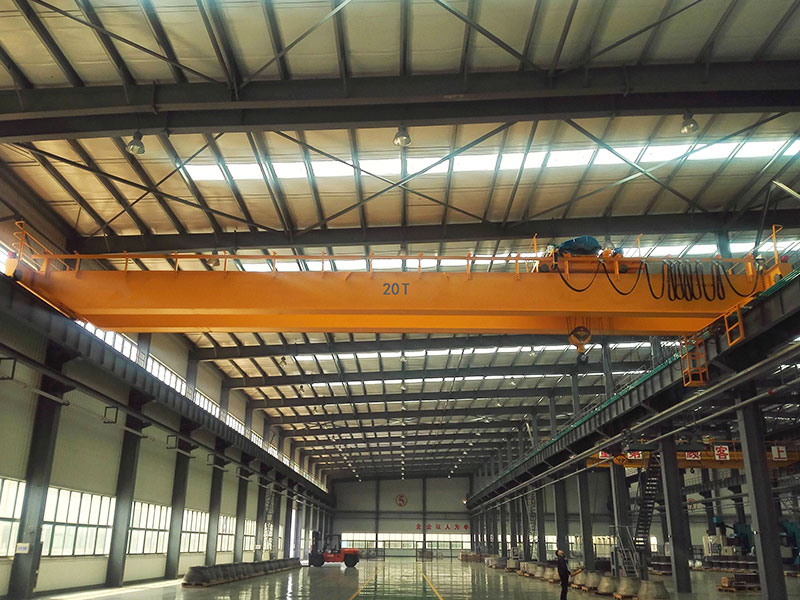Electric Overhead Traveling (EOT) cranes are a vital part of many industries, ranging from manufacturing plants to steel mills, warehouses, and construction sites. A key component of these cranes is the EOT crane trolley, which plays a crucial role in lifting and transporting heavy loads along the crane’s beam or girder. In this article, we will delve into the function, design, operation, and maintenance of the EOT crane trolley, offering a comprehensive understanding of its vital role in crane systems.

What is an EOT Crane Trolley?
The EOT crane trolley is the part of the crane that moves horizontally along the bridge (the horizontal girder) and is responsible for lifting and lowering the load. The trolley typically consists of several components, including the hoist, trolley frame, wheels, and motor. These components work together to ensure the smooth operation of the EOT crane and are integral to the crane’s lifting capacity and speed.
The EOT crane trolley is mounted on the bridge of the overhead crane and travels along it to position the hoist for precise lifting and lowering. The trolley’s primary function is to carry the hoist mechanism, which is the part of the crane that performs the vertical lifting and lowering of loads.
Key Components of the EOT Crane Trolley
Understanding how the EOT crane trolley works requires an overview of its essential components:
- Trolley Frame: The frame is the structural component of the trolley that supports all other elements. It is designed to be both strong and lightweight to ensure that it can carry heavy loads while minimizing the overall weight of the system. The frame typically includes rails or tracks on which the trolley wheels run.
- Hoist Mechanism: The hoist is the part of the trolley that actually lifts and lowers the load. It usually consists of a motor, a drum (or drum unit), wire rope or chain, and hooks or other attachments for holding the load. The motor powers the drum, which winds or unwinds the wire rope or chain, raising or lowering the load.
- Wheels: Trolley wheels are critical to the smooth and stable movement of the crane. These wheels are mounted on the frame and run along the rails of the crane’s bridge. The wheels are usually made of durable materials such as steel to handle the heavy load and the stress of the moving crane.
- Drive Motor: The drive motor powers the movement of the trolley along the bridge. The motor is typically an electric motor that transmits power to the trolley through a gear system or direct drive. This motor allows the trolley to move forward and backward along the single or double girder overhead crane.
- Control System: The control system includes both the hardware and software that allow the crane operator to control the trolley’s movements. This typically involves remote controls or a control panel located in the crane’s cabin, which sends commands to the trolley’s drive motor.
- Brakes: Brakes are an essential safety feature of the trolley. They are used to stop the trolley after it has moved to a particular position and to prevent any unwanted motion when the crane is not in use. These brakes may be electrically or mechanically activated.
- End Trucks: The end trucks connect the trolley to the overhead crane’s main structure. These components support the trolley’s movement and help ensure stability as the trolley moves along the crane’s girder.

How the EOT Crane Trolley Works: Operational Process
Now that we’ve covered the key components, let’s look at how the EOT crane trolley operates during lifting operations.
1. Movement Along the Bridge
The trolley travels along the overhead crane’s bridge, moving from one end to the other. This horizontal motion is powered by the electric motor and controlled by the crane operator. The wheels of the trolley run along the crane’s rails, allowing it to move smoothly.
The movement of the trolley is precise, allowing the crane operator to position the hoist exactly where it is needed to lift the load. The trolley typically moves along the bridge with minimal friction, thanks to the quality of the wheels and the smoothness of the track system.
2. Lifting and Lowering Loads
While the trolley is responsible for moving horizontally, it is the hoist that performs the vertical lifting and lowering of the load. The hoist is powered by a separate motor, which controls the winding and unwinding of the wire rope or chain attached to the load.
As the crane operator moves the trolley into position, the hoist can raise or lower the load with extreme precision. Depending on the design, the hoist may feature a hook or other attachment for connecting to the load.
3. Synchronization with the Bridge and Hoist Movements
In many EOT cranes, the trolley is designed to work in tandem with the bridge and hoist movements. The synchronization of these movements is crucial to ensure that the load is transported safely and accurately.
The bridge moves along the tracks (typically via a separate motor and system), while the trolley moves along the bridge. The hoist mechanism, mounted on the trolley, then performs the vertical lifting or lowering. In some advanced overhead crane systems, all of these motions are carefully controlled and can be monitored via a central control system.
Types of EOT Crane Trolleys
EOT crane trolleys come in various designs depending on the application and the type of crane system. Some common types include:
- Single Girder Trolley: A single girder crane trolley is used in overhead cranes with a single girder supporting the hoist and trolley. This type of system is typically used for lighter loads and smaller lifting capacities.
- Double Girder Trolley: Double girder trolleys are used in more heavy-duty applications where higher lifting capacities are required. They provide more stability and can support larger, heavier hoists.
- Top Running Trolley: In this design, the trolley runs on top of the crane’s bridge beams. These trolleys are generally used for heavy duty overhead cranes with higher lifting capacities.
- Under-running Trolley: Under-running trolleys are mounted below the crane bridge and are often used in smaller applications or for low-headroom requirements.
Advantages of EOT Crane Trolleys
The EOT crane trolley offers several advantages that make it indispensable in material handling systems:
- Increased Load Capacity: The EOT crane trolley is designed to support heavy loads, with modern systems capable of lifting several tons of material. This makes it ideal for industries such as manufacturing, shipping, and construction.
- Efficiency: The trolley system allows precise movement and positioning of loads, making it highly efficient for tasks that require accuracy, such as assembly, lifting, and unloading operations.
- Durability: The materials used in the construction of the trolley are designed to withstand harsh industrial environments. Steel, for example, is used for the frame and wheels, ensuring that the trolley can handle heavy loads over long periods without wear.
- Safety: Modern EOT crane trolleys are equipped with advanced safety systems, including emergency stop buttons, overload protection, and safety brakes, which prevent accidents and damage during operation.
Maintenance of the EOT Crane Trolley
Proper maintenance of the EOT crane trolley is essential to ensure its longevity and smooth operation. Key maintenance tasks include:
- Regular Lubrication: Ensuring that the trolley’s wheels and motors are well-lubricated helps prevent wear and tear.
- Inspection of Hoist Mechanisms: Periodic inspections of the hoist’s wire rope, motor, and brake systems ensure the safe and efficient operation of the crane.
- Checking for Structural Integrity: The trolley frame should be regularly inspected for any signs of fatigue or damage, especially in high-load applications.
- Cleaning: Regular cleaning of the trolley’s components helps reduce the buildup of dirt and debris, which can affect performance.
Conclusion
The EOT crane trolley is a critical component of an overhead crane system, facilitating the safe and efficient movement of loads within industrial environments. From the basic design to the advanced features found in modern systems, the trolley ensures that cranes can lift and transport heavy materials with precision. By understanding how the EOT crane trolley works and ensuring proper maintenance, industries can maximize the performance, safety, and longevity of their crane systems.
